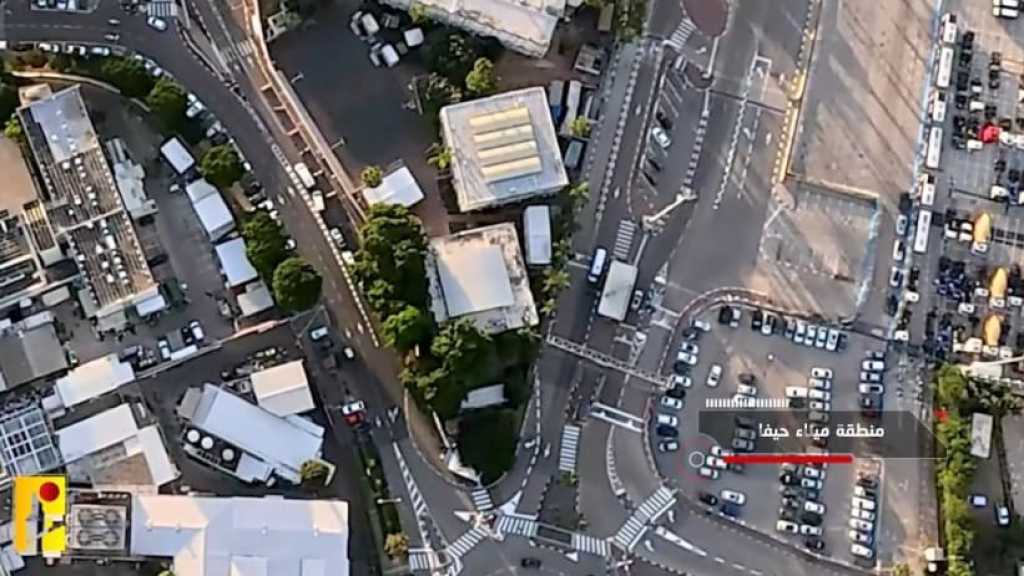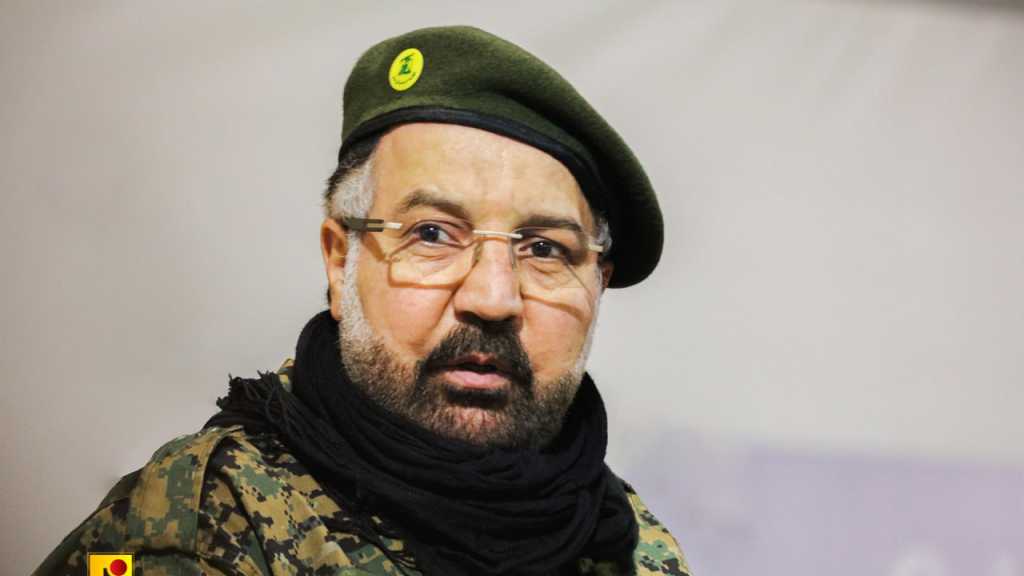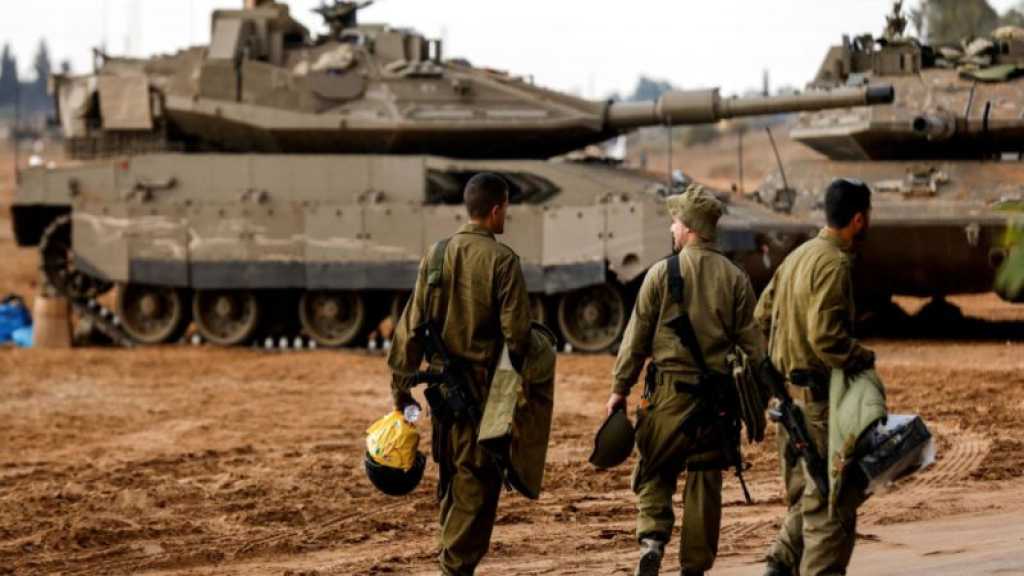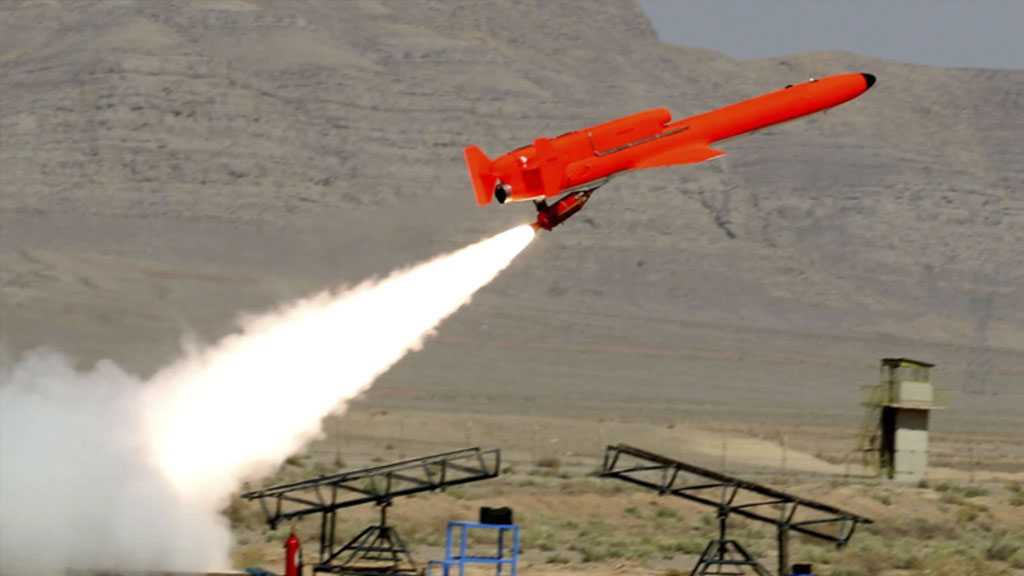Hassan Al-Laqqis: The Man Who Flew Over Palestine
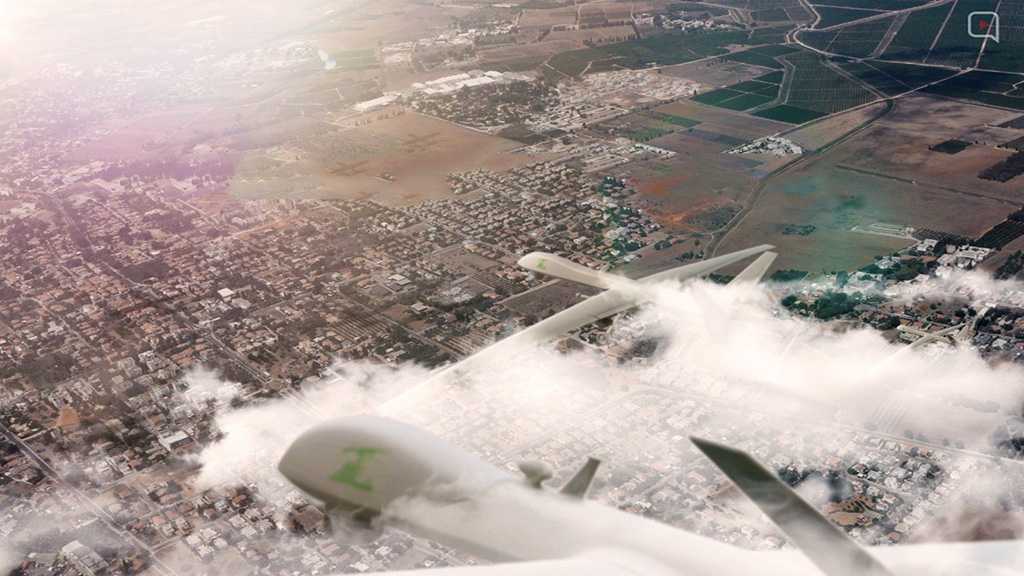
By Khadija Shokor
It has been five years since the martyrdom of Hajj Hassan al-Laqqis. One of the advantages of having him as a leader was that he was a dreamer, but he also sought "with all his heart" to make his dream come true. He did it. He is a happy martyr, in the immediate sense, having achieved his dream, himself. Along with a group of dreamers, they had to fly away.
The following text will shed light on some of this man’s accomplishments. He, like all the martyrs of the resistance, had (some) of his achievements revealed after his departure. It was his departure that revealed his identity. One of his close friends retells memories of his life. We, the living who have been blessed with the pride the resistance created, owe it to him to honor his memory.
12 men from the “Israeli” Mossad made up the group assigned to a mission in the southern suburbs of Beirut on December 4, 2013. The objective was the assassination of Hezbollah leader Hassan al-Laqqis, who had become an extraordinary threat to the enemy.
Two members of the group were tasked with the actual killing, while the remaining 10 were assigned the roles of implementation, transport and surveillance. The degree of danger that the man's work posed to the enemy was illustrated by the great deal of risk it undertook by sending this type of group.
"I arrived home and they told me that Hajj Hassan had called me minutes earlier. When I was about to get back to him, his personal bodyguard called me to tell me that Hajj’s concierge informed him that someone had shot Hajj Hassan," a friend of the martyr recalled with anguish.
Five years have passed but the scenes from that night are still enshrined in this friend’s mind.
“I arrived to find him leaning on the door of the car, smiling as blood flowed from his head. I approached and found the pistol in his other hand,” he said.
The 50-year-old man gets on memory lane and goes back to the beginning of his relationship with Hajj Hassan.
"He returned from Africa in 1978, and since then we have been friends," he recalls.
This friend insists that excellence was Hajj Hassan’s quality from a young age.
"He was exceptional on all levels. He excelled in his studies. He was refined in his manners. He was constantly ambitious. I remember when we finished high school, Hassan learned that there was an institute offering computer courses in Gefinor. He was quick to register although this field was not known at the time. Ever since he was little, he liked to know everything new in technology and development. So much so that he preferred to buy new technological magazines and equipment rather than the basics,” the friend explains.
Anyone you ask about Hajj Hassan’s qualities would tell you, and Sayyed Hassan Nasrallah confirmed as much in his speech that he was “a hard and diligent worker, well mannered, loving and creative. He was one of the brilliant and distinctive minds of this resistance.”
Sayyed Nasrallah knew Hajj Hassan very well, describing him as “a beloved brother, companion and a close friend since we were young men in the city of Baalbek."
Baalbek was the city where Sayyed settled after returning from Iraq in late 1979 to complete his studies at a seminary founded by Sayyed Abbas al-Musawi. At the time, the relationship between the two young men was centered around the mosque. Later, when Sayyed became the cultural leader of the Amal movement in Baalbek, Hajj Hassan joined him. That was in 1980. He stayed close to him during that period. When Sayyed’s life was threatened because of his positions and speeches he delivered on the platforms in Baalbek, Hajj Hassan insisted on accompanying him to those events. He also insisted on staying with him during that time in case of any security risks that Sayyed faced. Since then, their friendship grew, developed and never ceased.
One of Hajj Hassan’s friends recalls how they and a group of young men accompanied Sayyed on the day of the “Israeli” invasion, trying to mobilize people against the enemy. They passed through the city of Baalbek and chanted: Death to America ??and Death to “Israel”.
Not only were they friends, they were also partners when the resistance movement was born. Even when Sayyed moved to Beirut, the two kept in touch both professionally and socially.
The Iranian Revolutionary Guard came to Lebanon. It organized military training courses for young people to resist the occupation. Hajj Hassan rushed to join the first of these courses. Later, he worked at the Revolutionary Guards' Staff Office. He was in direct contact with most Iranian officials as a result of his work. And because he had a quick-wit by nature, he quickly became fluent in Farsi. He saw most of Sayyed’s meetings with the leaders of the Revolutionary Guard. This gave him extensive experience and broader relationships.
With the “Israeli” occupation being limited to the South and western Bekaa and the jihadist operations concentrated there, Hajj Hassan made several field visits in those areas. He participated in qualitative operations, most notably the storming of “Israeli” positions, such as the one against the "Tomat Niha" site in 1988.
His fight against the enemy allowed him to notice some of the obstacles and problems the Mujahideen faced on the battlefield. He sought solutions to overcome these issues. He began working on the Signal Weapon, exerting a lot of effort to develop it through the introduction of modifications. The effects of these modifications emerged in the communication system – both wireless and wired. He also paid attention to the latest technological developments in security and military spheres.
He did not spare any opportunity to take advantage of everything new that can benefit the resistance. For this purpose he always sought to bring as much of the advanced technology as possible and make use of it for the resistance. He became the primary reference for technology to the entire resistance leadership. He was a diligent and hard worker. He participated in choosing the resistance’s missile arsenal and developed it. He expanded his research in this field until he became the first advisor to the military leadership every time it was presented with new weapons.
Later, the challenges grew, especially after the resistance grew stronger and the enemy's precautionary methods intensified. He continued to propose ideas and solutions to face the challenges on land and the difficulties of land barriers, until he began to think about how to use the sky to face the difficulties on land.
"I used to make fun of him," says Hajj Hassan’s friend. "Every time I entered, I would find him trying to assemble wooden pieces and install them on a small motor. I would ask him: Do you expect these pieces to take off? He would answer me with confidence: it will not only take off, I will make it capture images. You don’t know. I might make it carry a weapon in the future."
That idea was born in 1988. That was when the ambitious young man, who did not believe in the existence of "impossible", decided to breach the sky.
He first started from his small room. He bought a lathe, collected simple motors, pasted them together with wooden pieces, and then tried to make them fly.
One, two, dozens of failed attempts. But finally he succeeded in making one of those designs fly. With his humble but persuasive manner, he managed to turn this idea into a conviction among the leaders and officials. This would later be known as the Air Force Unit of the Islamic Resistance.
It was not an easy journey. Every achievement cost Hajj Hassan and his team a lot of studying, planning, programming and working day and night. They were keen on readiness and development because they believed that the technological battle with the enemy would not end. This task cost a lot of time, effort and even souls. The names of the pioneers of that stage were not revealed except for those who were martyred, including Hajj Hassan, Hussein Ayoub and Jamil Skaf. The latter two excelled in this field, and both were martyred while they were taking part in developing it.
Sacrifice, for them, was not a hindrance. It was an incentive to continue. Therefore, Hajj Hassan continued to work on the development of drones. For this purpose he visited the aircraft factories in Iran. He attended many of the workshops there and met with many specialists in this field to benefit from their experience in developing domestic Iranian aircraft.
He never stopped looking for new developments worldwide in a bid to take advantage of any advances in his field.
Among the “Israelis” his work earned Hajj Hassan al-Laqqis the label of an officer in the existing war of minds against the resistance. This drove the “Israelis” to attempt to assassinate him in the early 1990s. A bomb was planted near his home in Baalbek, according to the martyr's friend.
"He was returning to his house, and could not overtake a bulldozer driving in front of him. And then he turned right to overtake it. At that moment, a large explosion was heard on the other side,” the friend said.
The enemy was wrong to think that the assassination attempts would weaken al-Laqqis’ determination. After that incident, he returned to work in both the missile and aerial fields with greater focus, expanding the realm even further.
After the “Israeli” defeat in Lebanon in 2000, his work broadened. The drones or what was known as the air force unit had several factories. He managed them with a team he chose and trained carefully. Sayyed Nasrallah visited those factories periodically, being updated on their developments. The leaders of operations soon demanded the participation of these aircraft in their military operations due to their contribution in guaranteeing success.
Over the past years, the aircraft became the resistance’s powerful eye in the sky, both before and during the military operations. This was only some of what Hajj Hassan planned. The effects of this activity emerged clearly during the July 2006 war. At that time, the enemy returned to stalk this commander, who had worried them for many years. The “Israelis” took advantage of the outbreak of the war to try to assassinate him again. The “Israelis” confirmed this themselves.
"I was busy with my work," said his close friend. “Hajj Imad Mughniyeh called me and told me that he had just seen Hajj Hassan on television during a live broadcast after a building had been destroyed in Shiyah. He asked me to go to him and tell him to leave the area."
The friend continues, “when I arrived, I learned that he was trying to search the rubble for his 18-year-old son Ali, who was in the building. The martyr later told me that he went to the building to deliver a bag to his son. But shortly after he left, the “Israeli” aircraft struck the building and destroyed it.” His son was martyred.
"He was dauntless despite the loss," his friend said. "He left the place and continued working hard and firm. We even noticed this firmness when we accompanied him to see his martyred son in the hospital three days after the aggression. He quickly bid him farewell and went back to his work with determination until the end of the war.”
The war ended, and al-Laqqis’ ghost kept haunting the “Israelis” who could not weaken his determination, not even by killing his son or destroying his home. He immediately returned, even before rebuilding his home, to pursue his work in airspace.
After the July 2006 war, work on drones was accelerated in light of the outcome of the war. Hajj took advantage of the scientific developments and the resistance’s existing capabilities to find new models and meet the emerging needs after the war.
The drones did not only operate within the resistance in Lebanon. In Syria, for example, they were credited with assisting most of the confrontations that took place. The al-Qusayr battle is one of the most prominent pieces of evidence.
The martyr's friend tells us that the latter showed him a video how these drones were operating during the battle. They took pictures, which were directly transmitted to the command room. The command room in return contacted the field group and informed it about the details of the place and the positions of the militants. The drones reduced the loss of lives and helped in the success of the operation as a result of the accumulation of knowledge.
The martyr’s friend added, "after the battle of al-Qusayr, the martyr informed me of a new plan, which aimed at arming the aircraft, enabling us to use it in filming and bombing. He reminded me of how he told me about this goal since the beginning."
"Indeed, after a short period of time, he returned and played a video showing the success of a maneuver in which this plan was carried out," the friend added.
Hajj Hassan was martyred, but his thoughts, approach and the fruits of his labor live on, with the same strength and determination. His team continued to make advances in his work and achievements. The effects of this work spread beyond Syria. Until today, Hajj Hassan has not really been known. Not by friend or foe. But some of his achievements will be revealed in the coming war, through the air force and the Islamic Resistance’s drones when the headlines read: “the resistance’s drones attack “Israel”.”
Source: Al-Akhbar Newspaper, Translated by website team
Comments
